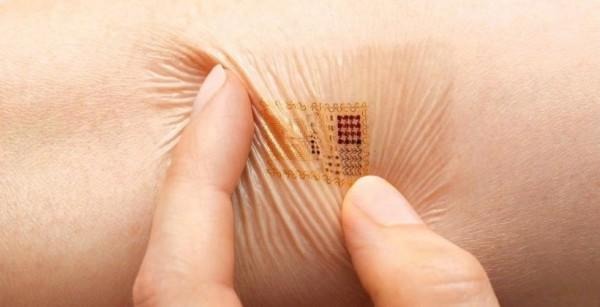Digital Tattoo Deals Drugs For Next-Gen Wearables
Google isn't the only team working on digital tattoos, with a new adhesive patch that can not only track biometrics but administer drugs being developed that could potentially revolutionize how long-term conditions like Parkinson's disease and epilepsy are treated. The 0.003 millimeter thick sticky patch is the handiwork of a team at the University of Texas in Austin, and layers sensors, onboard storage, medication, and microheaters into a Band-Aid scale rectangle.
Described in a new research paper published in Nature Nanotechnology, the multifunction wearable device – also billed as "electronic skin" – is made of a tissue-like polymeric substrate layered up with different chunks of slimline functionality.

So, there are sensors that can track skin temperature and how the body is moving, and a chunk of resistive RAM storage to keep track of the data that's collected. The drug layer can be controlled by the patch itself, using heat to release medication that's absorbed through the skin.
The developers say it'll be particularly useful for patients with movement disorders.
Motorola made headlines back in May 2013 when the company revealed it was investigating digital tattoos for next-gen biometrics. Led by former DARPA chief Regina Dugan, the project opened the door to entirely hands-off security where phones, tablets, and other systems could recognize the user based on their vital signs.
What's inside Motorola's Digital Tattoo?
Another project considered smart pills that, when swallowed, generate electricity from stomach acids and can transmit health data to an externally-worn device. Production of such pills is already imminent, with trials expected to kick off in the UK among other places later this year.
The Advanced Technology and Projects team will remain behind at Google following Motorola Mobility being sold off to Lenovo, the search giant has confirmed.
As for this new medicinal patch, there are some hurdles to be overcome before we can slap a drug sticker to our forearms. Currently it requires a power supply and data transmitter to work fully, which are more bulky and less flexible than the rest of the digital tattoo. Nonetheless, advances there are expected to come in time, relying on nanomembranes and nanoparticle printing for assembly.
VIA Nature
